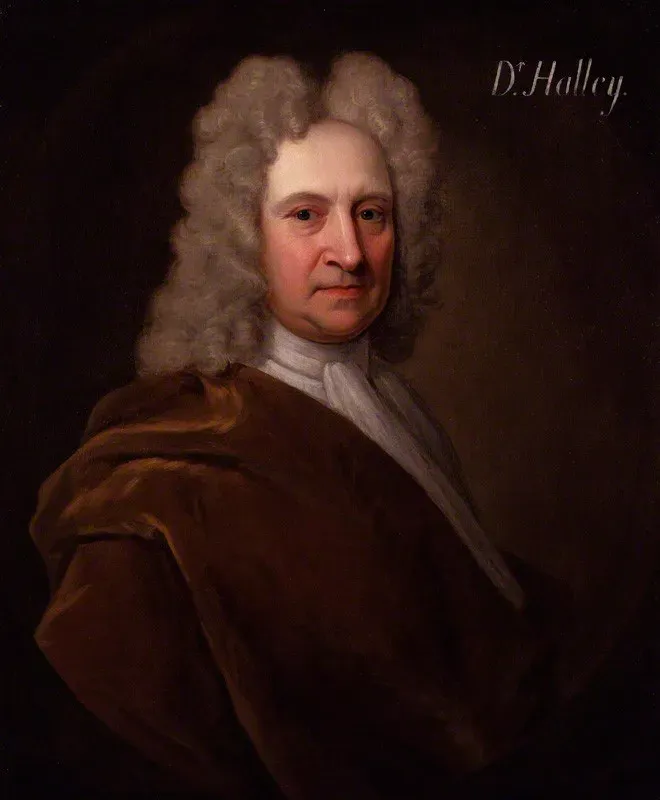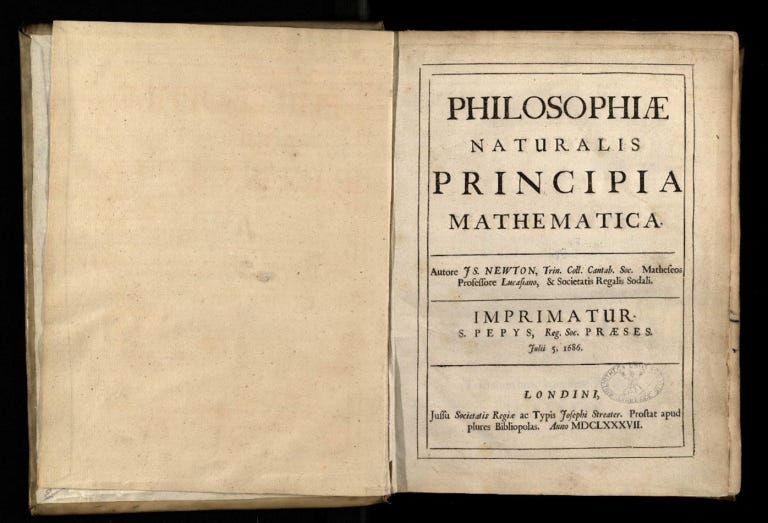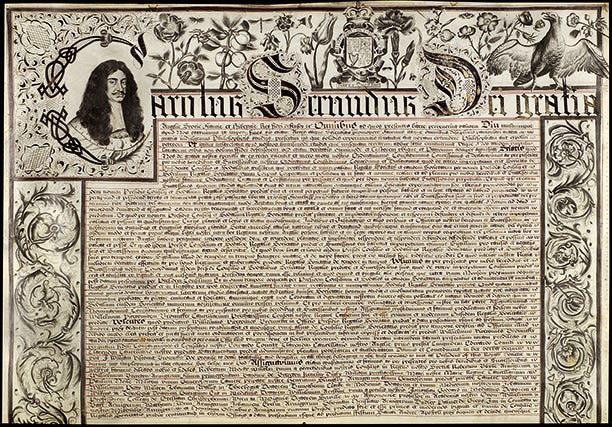Transits & Transactions: The Genius of Edmond Halley
In both the scientific and wider community, the name of Edmond Halley is almost exclusively associated with his eponymous comet. This, however, overlooks Halley’s other contributions to the scientific world.

In both the scientific and wider community, the name of Edmond Halley is almost exclusively associated with his eponymous comet. This, however, overlooks Halley’s other contributions to the scientific world. Publishing in fields ranging from pure maths to geophysics [1], Halley was a true polymath, and should be remembered as far more than just an astronomer.
Halley was a visionary, someone who saw beyond his own work into the scientific future, and who put the expansion of scientific knowledge before his own position and reputation, a trait that was somewhat unusual at the time.
Here, we shall examine this through the lens of two case studies. First, his call to arms of the scientific community to use observations of the Venusian transits of the 1760s to determine the distance between the Earth and the Sun. Second, his key role in the publication of Newton’s Principia, without which we may never have seen the great work in its current form [2].
The Measuring Stick of the Universe

By the early 17th century, Johannes Kepler had developed his laws of planetary motion [3]. Using the third of these, which relates a planet’s orbital radius to its period, he attempted to determine the size of the heliocentric universe [4]. Using the aforementioned law and astronomical observations, he could calculate the relative distance of the planets from the Sun. Then, by assuming a value for the distance from the Earth to the Sun — the Astronomical Unit (AU) — he could calculate the absolute values for the orbital radii of the planets [4]. His calculations of the former were fantastically accurate, but his estimate of the AU was not. He assumed a distance of 3,469 Earth radii, about 20 million kilometres, a value far smaller than the modern value of 150 million kilometres [4] [5].
It was also the work of Kepler that led to the first direct observations of the transit of a planet. From his Rudolphine Tables, published in 1627 [6], he predicted the transits of Mercury and Venus in November and December of 1631 respectively [4]. No observations were made of the transit of Venus in that year, but the transit of Mercury was observed by Pierre Gassendi [4]. Kepler also predicted the 1761 transit of Venus, but inaccuracies in his tables meant he failed to predict the next transit in 1639. It was an Englishman, Sir Jeremiah Horrox, who rectified these errors and he and colleague William Crabtree were the first to observe a transit of Venus in December 1639 [4].
Almost 40 years later, Halley observed the 1677 transit of Mercury from St Helena. He was a strong advocate for the method of calculation of the AU put forward by Scottish mathematician James Gregory in 1663 and determined from his observations that a transit of Venus would be better suited to the calculation due to its greater distance from the Sun [4].

The reason for this can be demonstrated by examining a method for the calculation of the AU using a transit. What follows is such a method, adapted from [7, p. 45].

As shown above, the determination of the AU, here R_E, from the transit of a planet depends on measurement of α. This requires the further method outlined here, adapted from [7, p. 48]:


This method helps demonstrates why Mercury fails as an option, as Halley explains in his 1716 paper on the subject:
“…I immediately concluded that, the sun’s parallax might be duly determined by such observations if Mercury…had a greater parallax, when seen from the sun; for, this difference of parallaxes is so very inconsiderable…Consequently, though Mercury is to be frequently seen within the sun’s disk; he will scarcely be fit for the present purpose.” [8]
Halley is stating that Mercury is not a viable option to measure the solar parallax because, due to the proximity of the planet to the Sun, the paths taken across the Sun as observed at the two observatories are too similar. As such, the difference in time between the observed transits is too small to be measured. Halley then goes on to explain why the transit of Venus would be a better option:
“There remains therefore Venus’s transit over the sun’s disk, whose parallax…will cause sensible differences between the times in which Venus shall seem to pass over the sun’s disk in different parts of our Earth. From these differences, duly observed, the sun’s parallax may be determined, even to a small part of a second of time…” [8]
Problematically, transits of Venus occur in pairs separated by 120 years [8]. With the last pair concluded after the 1639 transit, the next opportunity to perform the measurements would not come until 1761 and Halley, 60 when the paper was published in 1716, was under no illusion that he would observe the next transit himself [4]. Halley thus spends much of the rest of the paper outlining places on Earth where both the start and end of the transit would be visible, which would be necessary to time the transit [8]. Most strikingly, he called both the astronomical and wider scientific community to action, writing:
“And indeed I would have several observations of the same phenomenon [the transit] in different parts, both for further confirmation, and lest a single observer should happen to be disappointed by the intervention of clouds from seeing what I know not those either of the present or following age shall ever see again…Therefore again and again, I recommend it to the curious strenuously to apply themselves to this observation.” [8]
Here, we see an example of what sets Halley apart from his contemporaries. He appears to be genuinely concerned with the advancement of human knowledge and understanding, rather than the advancement of his own reputation. This wouldn’t be his observation or calculation; he wouldn’t be alive to perform it. What mattered to Halley was that the calculation took place at all.
And so, in 1761, astronomers were sent far and wide to observe the transit. The importance of the observations was such that French and British scientists even collaborated on the measurements, despite the ongoing Seven Years War [9]. Due to optical effects, however, the start and end points of the transit were difficult to measure, and the results gained were less accurate than Halley would have hoped [7] [9]. In spite of this, the AU was calculated to be about 153 million km [9], a value only about 2.6% greater than the modern value [9]. Indeed, more accurate results would not be found for another 130 years, when David Gill used the parallax of asteroids to find the modern value of the AU [7].
Halley, Newton, and the Principia

One can argue that the series of events that led to the publication of one of humanity’s greatest scientific works began on the evening of January 24th, 1684 [2]. That evening, at a London coffee house [10, p. 190], Halley, Robert Hooke and Christopher Wren discussed Halley’s recent proof that Kepler’s third law implied that the force of attraction of a planet to the Sun must be inversely proportional to the square of the distance to the planet [2]. Wren challenged Hooke and Halley to prove that this so-called “Inverse Square law” implied the elliptical orbits of Kepler’s first law and offered 40 shillings worth of books to the first to complete the task before the end of March [2] [10, p. 191].
Neither Hooke nor Halley managed to produce a solution by the March deadline. In August, Halley travelled to Cambridge University to meet Isaac Newton, who had held the Lucasian Chair of Mathematics since 1669 [11] and whom Halley had met in 1682 to discuss comets [12, p. 403].
Abraham De Moivre, a brilliant mathematician in his own right [13], records Newton’s recollection of the meeting:
“…[Halley] asked him what he thought the Curve would be that would be described by the planets supposing the force of attraction towards the Sun to be reciprocal to the square of the distance from it. Sir Isaac replied immediately that it would be an Ellipsis…whereupon Dr Halley asked him for the calculation without any farther delay, Sir Isaac looked among his papers but could not find it, but promised him to renew it, & then to send it to him…” [10, p. 192] [12, p. 403]
Newton’s response was long in coming, but when it arrived three months later it was far beyond what Halley had hoped for. Newton’s manuscript, De Motu Corporum in Gyrum, included not only proofs of the motion of planets under an inverse square law, but the beginnings of a more universal system of gravitation which united the work of Kepler and Galileo [12, p. 404] [14]. Halley at once recognised the significance of the work, and hurried back to Cambridge to discuss it further with Newton and to seek permission to share the paper with the Royal Society [10, p. 212]. On his return to London, Halley’s enthusiasm for De Motu convinced the society that the manuscript should be published as soon as possible [10, p. 212]. Newton, transfixed with his discoveries, then set about further expansions of the work. [12, p. 404].
The results once again exceeded Halley’s expectations. In September 1685, he received not a refined treatise on orbital mechanics, but the outline of a fully developed system of dynamics and gravitation which would go on to become the Principia [12, p. 436]. In April of 1686, the first volume having been completed by Newton [12, p. 443], Halley reported to the Royal Society that the Principiawas nearing readiness for publication. [12, p. 445].

When, by mid-May, the council had not yet convened to discuss Newton’s work, Halley spoke for the book at a general meeting of the society, resulting in an order that the book be published [10, p. 218]. This was a big risk for Halley, since, as a lowly clerk, it was far from his place to direct society policy on such important matters [12, p. 445], and it speaks to Halley’s recognition of the significance of Newton’s work that he would put his neck on the line in such a way.
If Halley thought the battle to publish the Principia was won, he would be sorely mistaken. Robert Hooke was claiming that the ideas surrounding the inverse square law were, in fact, his own, and that he should be referenced as a result [12, p. 446]. Halley wrote to Newton informing him of this [12, p. 446], and Newton, incensed, wrote, in reply:
“he has done nothing and yet written…excusing himself from that labour [proofs of the inverse square law] by reason of his other business: whereas he should rather have excused himself by reason of his inability…to go about it.” [19]
Newton and Hooke had a history of animosity. Since the 1670s [10, p. 176], the pair had clashed repeatedly and publicly, trading blows at the Royal Society over Newton’s paper on optics [15, p. 123]. Later, in 1679, a correspondence about the motion of bodies falling under gravity resulted in Hooke reading a humiliating correction of Newton’s theories in front of the assembled fellows [15, p. 164]. Newton thus held Hooke as an enemy until the latter’s death in 1703 [10, p. 176].
This smouldering hatred was sparked into a wildfire of fury by Hooke’s plagiarism claims of 1686, and Halley proved an adept firefighter. When Newton decided that he would not publish the third volume of the Principia in the light of Hooke’s allegations, Halley, unwilling to let him mutilate this great work in a fit of pique, began to talk Newton back to sense [12, p. 449]. He assured him that the Royal Society was on his side, and wrote, to Newton:
“Sir I must now again beg you, not to let your resentments run so high, as to deprive us of your third book…” [12, p. 450] [15, p. 216]
With his anger sufficiently quashed by Halley’s further soothing [15, p. 216], Newton eventually added an acknowledgement to Hooke, along with Halley and Wren, into his proposition describing the inverse square law, and, while it was sufficiently curt that “one might search for some time to find a less generous acknowledgement” [12, p. 450], it served to put a close on the issue.
The final concern for Halley was a practical one. The Royal Society published The History of Fishes in 1685, and poor sales of the book left the society in such a financial mess that, by the end of 1686, they were paying Halley’s wage as clerk in copies of the ill-fated tome. As such, when the council ordered the publication of the Principia in May of 1686, they also decided that Halley was to oversee and, crucially, finance the printing [12, p. 453].

This would be no small undertaking for Halley. It is estimated that the first run of the Principia cost between £60 and £100 [2]. Considering Halley’s annual wage was £50, which, at the time, was being paid in worthless books if at all, one can see part of the reason why Halley was so desperate for the book to succeed [12, p. 453]. Indeed, it is thought that he sold some of his inheritance from his late father, who died in 1684, in order to finance the publication of the book [2].
However he managed to acquire the funds, the printers were duly paid, and the first edition of the Principia was published in the summer of 1687 [16, p. 132]. It was an instant hit among the mathematical community, though few truly understood it at the time [10, p. 223]. The book remains one of the most significant works of scientific literature to have been written. The system of dynamics laid out in the Principia would remain the basis of physics until Einstein published his theories of relativity in the 1910s.
Furthermore, the fact that the Principia was published at all is in no small part down to Halley. Sir Alan Cook agrees, writing that
“ Without Halley…there would have been no Principia, or at least no published Principia as we now have it” [2].
Newton himself wrote, in the preface to the first edition:
“In the publication of these things the most acute Mr. Edmond Halley…was responsible for my embarking upon these pages. For…he persisted in a request that I communicate it to the royal society, which body…then caused me to begin thinking of giving them to the public” [15, p. 216]
One could argue that his ministration of Newton’s temper in the face of Hooke’s 1686 allegations is due to his financial investment in the work, but this does not explain his support for the work at the Royal Society in May of that year, support which almost led Halley to lose his job as Clerk by the end of the year [12, p. 465]. Indeed, the very fact that he was willing to put so much money on the line for the book in the first place suggests that his support was for reasons at least not solely monetary.
A Perceptive Genius
From the two examples outlined above, it is clear that Halley put the overall progress of science before that of his own reputation. In the case of the Venusian transits, we see his advocacy, and outlines of methodology [8], for observations which he would have no chance of completing himself. Had he been a less generous man, he might have supressed his work when he realised it would not be him who would get the fame for determining the size of the AU.
Similarly, Halley put his reputation on the line to ensure the publication of the Principia when it was not his own work and when doing such was well above his station in the Royal Society. He provides a heartening contrast to the paranoia of Newton and the opportunism of Hooke, and while he did have his rivalries, such as with Astronomer Royal John Flamsteed [17], he was never involved in the kind of priority disputes which would dominate the latter half of Newton’s life [10, p. 332].
Most pertinently, however, the birth of the Principia shows Halley’s perceptiveness for the importance of scientific works. To personally pay for the publication of the book despite a shaky financial situation following the death of his father, especially when said book was written by a man who few would describe as easy to work with, he must have had at least a sense of what the Principia would become. Indeed, in a 1687 private letter to Newton, Halley wrote:
“You will do your self the honour of perfecting scientifically what all ages past have blindly groped after” [16, pp. 131–132]
Such a statement suggests that Halley must have realised the revolutionary nature of the Principia, and, further, that he had the foresight to put his efforts into ensuring its publication.





